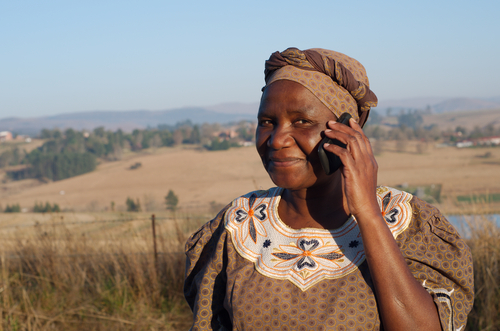
There’s an increase in the number of businesses now accepting mobile payment, sometimes called mobile money transfer, including grocery stores, gas stations, and fast food chains across the country.
Both Apple and Android have been busy getting their mobile wallet systems ready for what might eventually become a card-free, cash-free ecosystem at nearly every point of purchase across the U.S.
Different Cultures and Mobile Technology
While the U.S. might be focused on security, speed, and efficiency, countries like Kenya are looking at mobile payment transfer to help people gain access to healthcare, insurance, savings accounts, and loans.
In 2015, the use of mobile technology in Kenya grew suddenly; $32.5 billion, representing an estimated 53 percent of Kenya’s GDP, moved through a mobile money platform.
It’s no surprise then that Kenya’s leaders and foreign aid groups are looking at mobile technology to solve some of Kenya’s most persistent problems, particularly healthcare and insurance.
Mobile Healthcare in Kenya
According to a recent report by Business Call to Action, the government of Kenya has steadily decreased spending (as a percentage) on public healthcare, from 7.2 percent in 2010 to 4.3 percent in 2013.
The global average is about 10.1 percent, so Kenya has fallen dangerously low, limiting access to healthcare, especially among the county’s poorest citizens.
Most Kenyans are paying out of pocket for private healthcare, with rural and poor communities getting shut out altogether.
Unfortunately, the healthcare struggle in Kenya is two-sided: for example, the businesses offering mHealth solutions need a way to hold low-income individuals accountable for the services they sign up for—payment plans in particular.
The solution for both parties might in fact be mobile healthcare. New business models are looking for ways to provide a wide spectrum of services, and they’re using mobile money transfer to create efficiency, and accountability, with consumers.
Currently, healthcare providers are dealing with impoverished Kenyans, who are less familiar with formal policies, the benefits, and the risks. Most Kenyans are more familiar with risk pooling than formal insurance.
The good news is that companies are developing products that allow policies to be sold via mobile phone, which includes transferring a small down payment via mobile transfer and signing up for a daily payment deduction that comes out of the users’ mobile phone credit.
By mobilizing this process, the hope is that more Kenyans will have access to the healthcare services and information they need, while providers get the guarantee of receiving timely payments.
This model extends to other services like medical savings accounts, healthcare loans, and other critical services. Moreover, mobile offers cheaper and more effective lines of communication between doctors and patients.
For example, prenatal care is provided via SMS messages, which inform expecting mothers of appointments and developmental markers they should be on the look out for as the child comes to term. In rural areas, this could save thousands of lives.
At first blush, mobile money transfer might not seem like a healthcare solution, but the way in which each culture uses technology is so different that it’s very possible it will work for Kenya.